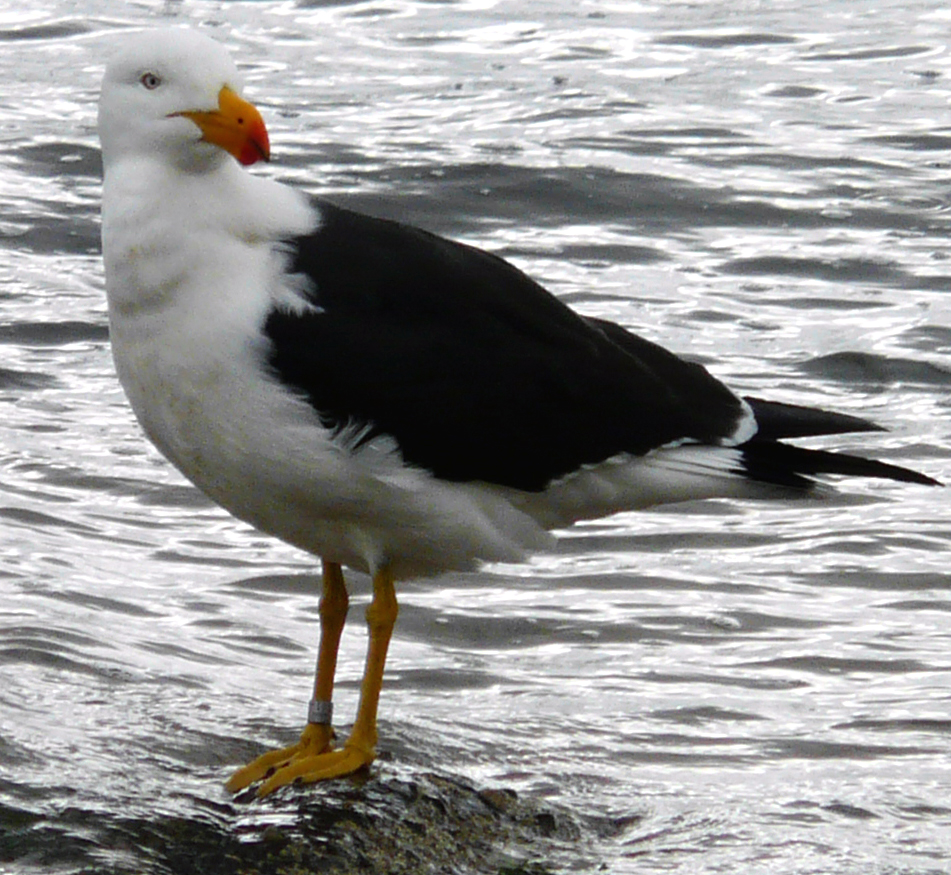- Pacific Gull
Taxobox
name = Pacific Gull
status = LC | status_system = IUCN3.1

regnum =Animal ia
phylum = Chordata
classis = Aves
ordo =Charadriiformes
familia =Laridae
genus = "Larus "
species = "L. pacificus"
binomial = "Larus pacificus"
binomial_authority = Latham, 1802The Pacific Gull ("Larus pacificus") is a very large
gull , native to the coasts ofAustralia . It is moderately common between Carnarvon in the west, andSydney in the east, although it has become scarce in some parts of the south-east, as a result of competition from theKelp Gull , which has "self-introduced" since the 1940s.Much larger than the ubiquitous
Silver Gull , and nowhere near as common, Pacific Gulls are usually seen alone or in pairs, loafing around the shoreline, steadily patrolling high above the edge of the water, or (sometimes) zooming high on the breeze to drop ashellfish orsea urchin onto rocks.Taxonomy
The Pacific Gull was first described by English ornithologist John Latham in 1802 from a Thomas Watling drawing, where the local name had been recorded as "Troo-gad-dill". [cite web |url=http://internt.nhm.ac.uk/jdsml/nature-online/first-fleet/nathist.dsml?sa=1&lastDisp=list&beginIndex=198 |title="Pacific Gull", native name "Troo-gad-dill" |accessdate=2008-08-15 |work=First Fleet Artwork Collection |publisher=The Natural History Museum |date=2007] Its specific epithet refers to the
Pacific Ocean .Two subspecies are recognised: the nominate race "pacificus" from the east coast, and "georgii" from South Australia and Western Australia.
Description
Adult Pacific Gulls range from 58 to 66 cm (23-26 in) in length, and are white, with dark wings and back, and a very thick (when compared to other gull species), powerful, red-tipped yellow bill. Young birds are mottled-brown all over, and attain their adult plumage only gradually: by its fourth year, a young Pacific Gull has usually become difficult to tell apart from an adult bird.
There are two
subspecies : the nominate eastern race prefers sheltered beaches, the western race "georgii" is commonly found even on exposed shores. Both subspecies nest in pairs or loose colonies on offshore islands, making a cup of grasses and sticks in an exposed position, and laying two or three mottled brown eggs.References
* Database entry includes justification for why this species is of least concern
Wikimedia Foundation. 2010.
